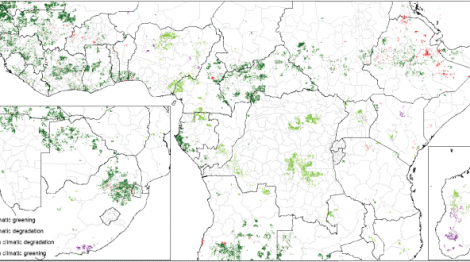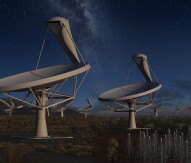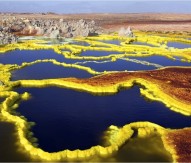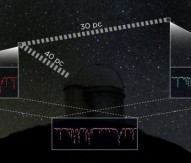
Space technology studies Africa climate changes
An international research team led by the UK’s University of Leicester has mapped the entire African continent south of the Sahara for geographical changes, and has discovered that many areas receive drastically different amounts of rainfall today compared to just ten years ago.
The study, which also includes the participation of the Joint Research Centre of the European Commission, investigated the rainfall and greenness of plants in African regions using satellite-mapping technology. The results suggest that areas such as the Congo, Nigeria and Madagascar now receive far less rainfall than they did a decade ago, while other locations such as the Sahel zone have become far greener through increased rainfall.
Professor Heiko Balzter, director of the Centre for Landscape and Climate Research at the University of Leicester and co-author of the study, said: “We looked at the satellite data and discovered a number of surprising hotspots of change.
“Large parts of the Sahel zone, which suffered from intense famine in the past, has greened up over the past decade, probably because of wetter weather. We know that rainfall in this region depends highly on the African monsoon. The weather systems can change a lot on the timescales of tens of years. This means that our maps cannot be regarded as maps of long term climate change impacts; they merely reflect climatic impacts over the past ten years.
“We know that this period is too short to related to the global warming debate. Future satellite observations will allow us to extend the time-series and observe large scale changes in Africa.”
Regions where more rainfall led to greener plants were mapped in West Africa, Central African Republic, West Cameroon and northeastern parts of South Africa. Areas of climatic vegetation degradation were located in southern Madagascar, Nigeria, Kenya and the Garden Route region of South Africa.
The findings highlight areas where climatic changes are the likely cause of greener or browner vegetation. More rain can lead to a ‘greening up’ of large regions, as was the case in the West African Sahel zone. If rains become scarcer in dry areas the plants cannot ‘green up’ as much. This effect is large enough to be observed from satellite.
Also involved in the research is the Institute of Electromagnetic Sensing of Environment of the National Research Council of Italy and the Polish Institute of Geodesy and Cartography.




